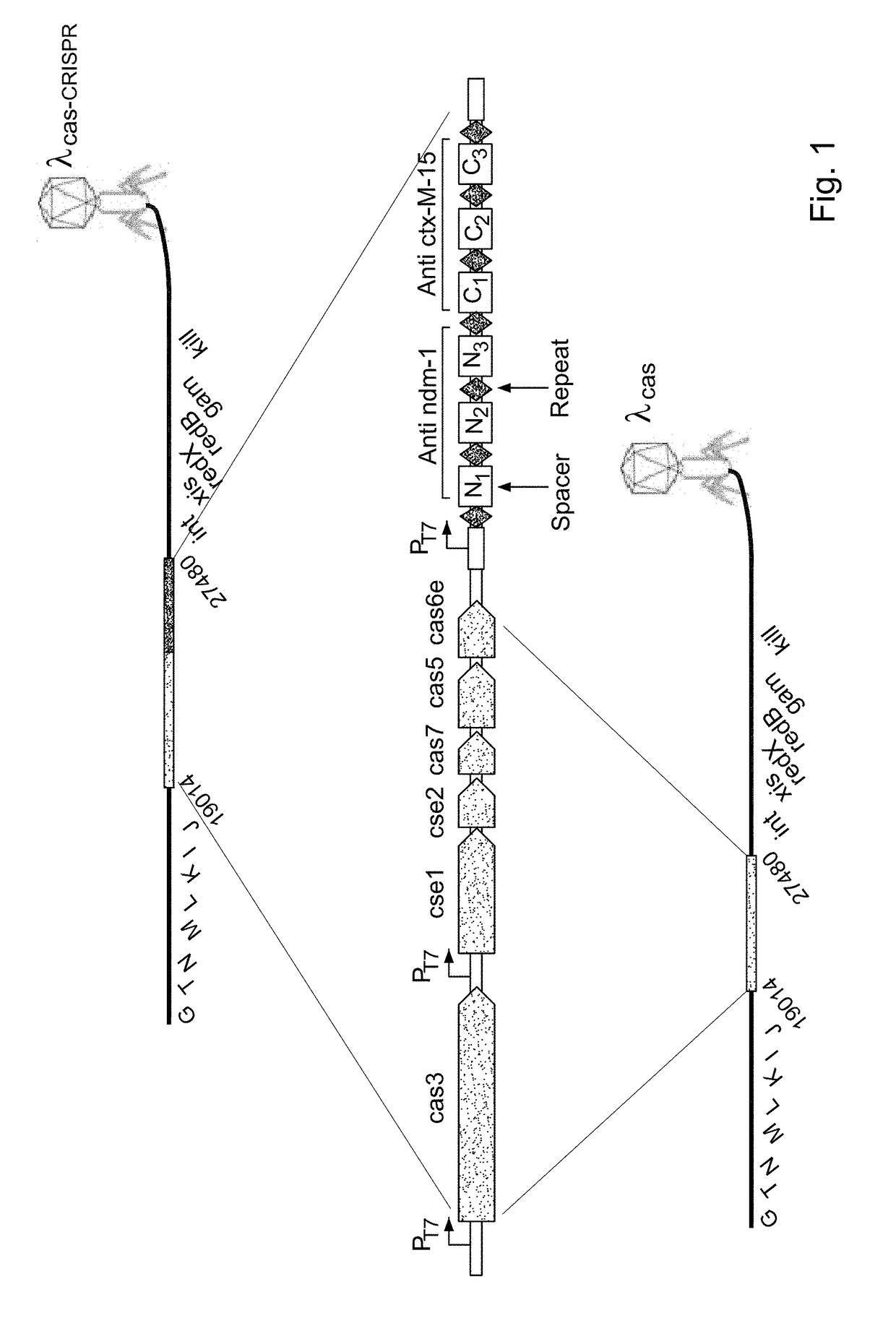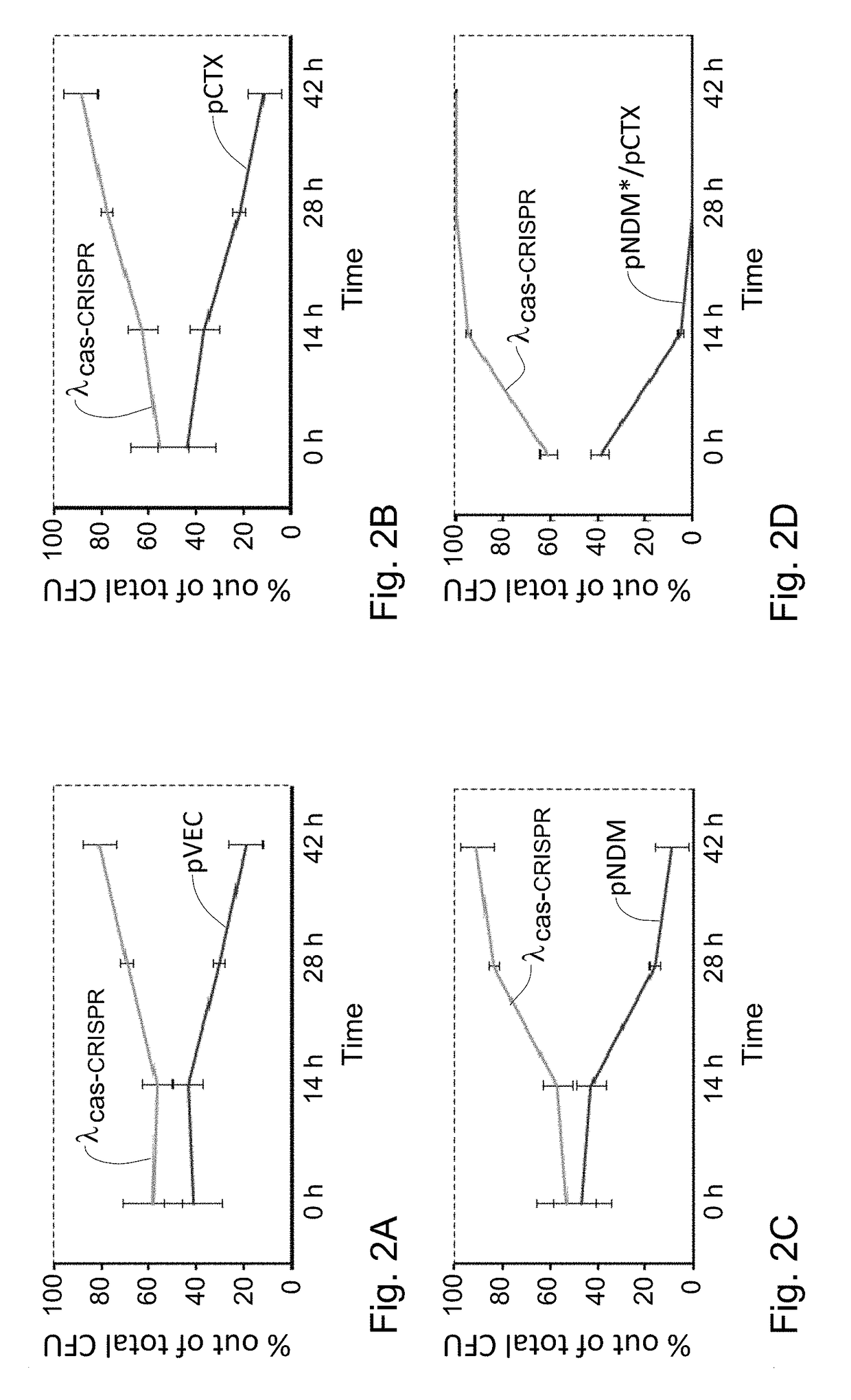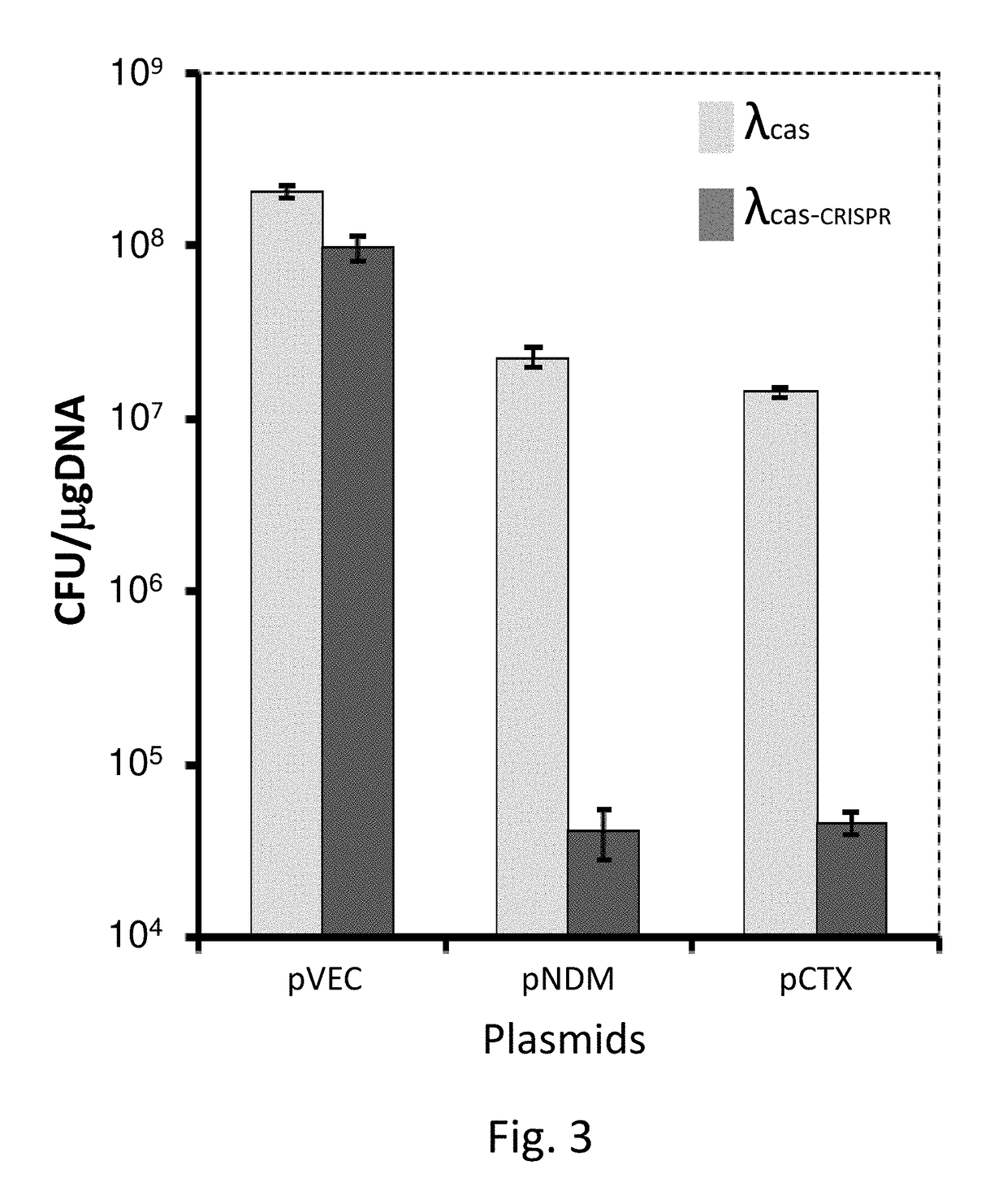Targeted elimination of bacterial genes
a technology of bacterial genes and bacterial resistance, which is applied in the direction of viruses/bacteriophages, biochemistry apparatus and processes, antibacterial agents, etc., can solve the problems of bacterial resistance overrun by the pace of accelerated development of newer antibiotics, lack of sufficient pharmacokinetic and efficacy studies in humans, and inability to treat. current patients, to achieve the effect of preventing a pathologic condition
- Summary
- Abstract
- Description
- Claims
- Application Information
AI Technical Summary
Benefits of technology
Problems solved by technology
Method used
Image
Examples
example 1
[0327]CRISPR-Cas System Delivery by a λ Phage
[0328]CRISPR / Cas systems have evolved in bacteria to limit the transfer of nucleic acids, such as phages, plasmids, or other parasitic elements. These systems consist of an array of short repeats of about 30 bp flanked by similarly sized sequences, called spacers (FIG. 1). The spacers serve as molecular “labels” of undesired nucleic acids. An invading DNA molecule will be eliminated from the cell if the system encodes a spacer that is identical in sequence to any part of this DNA molecule (26, 27). The elimination is carried out by specific proteins which “sense” the alignment, and target and destroy the invading molecule. Recently, a CRISPR / Cas system consisting of a single gene adjacent to a CRISPR array was reported to be active in Escherichia coli (27). The system was shown to target a plasmid which had a sequence identical to a spacer in the CRISPR array.
[0329]The system of the invention comprises two components or elements, the firs...
example 2
[0332]Lysogenized Bacteria Block Transformation
[0333]Naïve E. coli lysogenized with the λ phage encoding the CRISPR-Cas system (λcas-CRISPR) or with a similar phage lacking the CRISPR array (λcas) as a negative control were made competent and transformed with a control plasmid or plasmids encoding ndm-1 or ctx-M-15, all conferring streptomycin resistance. Transformation efficiency was determined by counting colonies that acquired streptomycin resistance. Lysogens of the λcas-CRISPR were transformed equally well with the control plasmid compared to lysogens of the λcas. In contrast, as shown in FIG. 3, these lysogens were transformed less efficiently with the targeted plasmids by approximately three orders of magnitude. These results clearly indicate that the lysogenized CRISPR-Cas system can be transferred into bacteria and moreover, this system specifically prevents horizontal gene transfer of antibiotic-resistance elements by plasmid transformations. To demonstrate that lysogeniza...
example 3
[0334]Protection from Lytic Bacteriophages
[0335]A desired feature of the sensitizing CRISPR-Cas system is the ability to concomitantly confer advantage to the pathogens harboring it. For example, resistance to lytic phages would enable selection and enrichment of sensitized pathogens exposed to them. Therefore, the inventors next genetically engineered lytic T7 phages encoding protospacers identical to the ndm-1 and ctx-M-15 spacers targeted by the transferred CRISPR-Cas system. These engineered phages would thus be targeted concomitantly with the resistance genes. These similar protospacers were intentionally cloned to ensure that the lysogens could not lose the sensitizing element without also losing phage resistance. In addition, targeting a synthetic protospacer of the phage rather than a naturally occurring sequence does not provide the lysogens with protection against the wild-type phage, and thus does not interfere with the natural ecological balance. Naïve E. coli were lysog...
PUM
| Property | Measurement | Unit |
|---|---|---|
| temperature | aaaaa | aaaaa |
| temperature | aaaaa | aaaaa |
| temperature | aaaaa | aaaaa |
Abstract
Description
Claims
Application Information
 Login to View More
Login to View More - R&D
- Intellectual Property
- Life Sciences
- Materials
- Tech Scout
- Unparalleled Data Quality
- Higher Quality Content
- 60% Fewer Hallucinations
Browse by: Latest US Patents, China's latest patents, Technical Efficacy Thesaurus, Application Domain, Technology Topic, Popular Technical Reports.
© 2025 PatSnap. All rights reserved.Legal|Privacy policy|Modern Slavery Act Transparency Statement|Sitemap|About US| Contact US: help@patsnap.com



